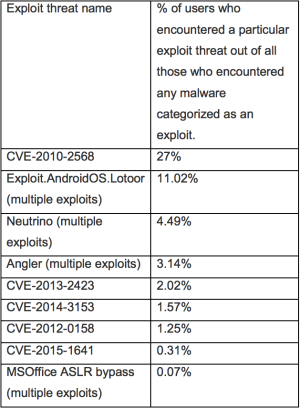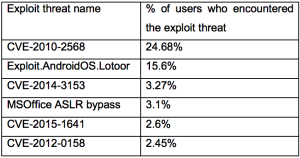
Enlarge (credit: Saurabh R. Patil)
One of the Microsoft Windows vulnerabilities used to spread the Stuxnet worm that targeted Iran remained the most widely exploited software bug in 2015 and 2016 even though the bug was patched years earlier, according to a report published by antivirus provider Kaspersky Lab.

The most widespread exploits of 2015 (credit: Kaspersky Lab)
In 2015, 27 percent of Kaspersky users who encountered any sort of exploit were exposed to attacks targeting the critical Windows flaw indexed as CVE-2010-2568. In 2016, the figured dipped to 24.7 percent, but still ranked the highest. The code-execution vulnerability is triggered by plugging a booby-trapped USB drive into a vulnerable computer. The second-most widespread exploit was designed to gain root access rights to Android phones, with 11 percent in 2015 and 15.6 percent last year.

The most widespread exploits of 2016 (credit: Kaspersky Lab)
The Windows vulnerability was first publicly disclosed in July 2010, a few days before security reporter Brian Krebs was the first to report on the Stuxnet outbreak. The bug resided in functions that process so-called .LNK files that Windows uses to display icons when a USB stick is connected to a PC. By hiding malicious code inside the .LNK files, a booby-trapped stick could automatically infect the connected computer even when its autorun feature was turned off. The self-replication and lack of any dependence on a network connection made the vulnerability ideal for infecting air-gapped machines. Microsoft patched the vulnerability in August, 2010.